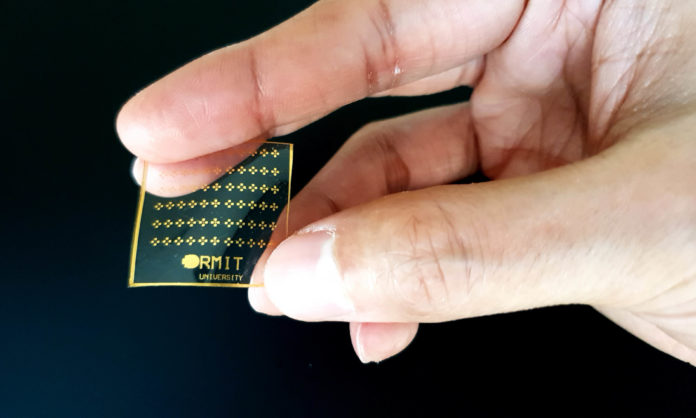By: Nick Gambino
Scientists at RMIT University in Australia have developed a new kind of electronic skin that can feel pain. Well, not exactly, but it does a good job of replicating the kind of signals that course through your body when you experience pain.
The implications in the field of prosthetics and skin grafts are huge if this proves effective. Sensing pain is a survival mechanism that allows us to avoid danger.
“Skin is our body’s largest sensory organ, with complex features designed to send rapid-fire warning signals when anything hurts,” Professor Madhu Bhaskaran, the lead researcher on the project, said. “We’re sensing things all the time through the skin, but our pain response only kicks in at a certain point, like when we touch something too hot or too sharp.”
The key for this type of electronic skin to work as a pain sensor is that it needs to work instantaneously. There’s no use discovering that a stove is too hot 30 seconds too late, or even 5 seconds too late.
This new prototype supposedly reacts instantly to crossing various pain thresholds from pressure, cold or heat. They were able to make this revolutionary skin by combining stretchable electronics, temperature-reactive coatings and brain mimicking memory.
Those three are pretty self-explanatory but the brain mimicking memory could probably use some clarification. Apparently to achieve brain mimicry they use electronic memory cells in order to remember and call up information from the past, even if that past is years earlier.
“We’ve essentially created the first electronic somatosensors – replicating the key features of the body’s complex system of neurons, neural pathways and receptors that drive our perception of sensory stimuli,” another researcher, Md. Ataur Rahman said of the breakthrough feedback receptors.
They’re not the first team to make a breakthrough in the area of pain sensing through electrical signals, but they are the first to create something that can tell the difference between various types of pain like “gently touching a pin with your finger or accidentally stabbing yourself with it.”
These are two completely different sensations and pain levels, and thus require different responses. If this kind of acute sensor was incorporated in the skin on a prosthetic limb, amputees would enjoy a returned sense of safety by once again being able to detect destructive pain through communication signals.





